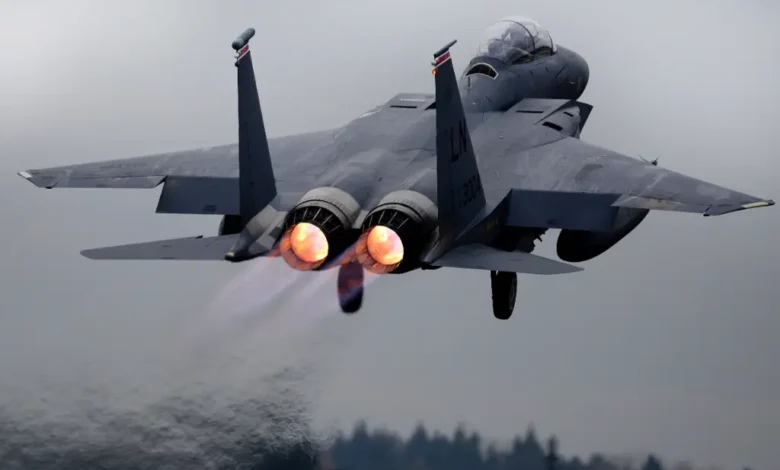Fourth-Generation Fighters: Power, Multi-Role, and High Maneuverability

Explore fourth-generation fighter jets like the F-16 Fighting Falcon, Mirage 2000, and MiG-29, known for multi-role capabilities, power, and high maneuverability. Learn their specs, roles in Cold War and beyond, and impact on military aviation.
The fourth-generation fighter jets (1970-1990) redefined military aviation with unprecedented multi-role capabilities, enhanced power, and high maneuverability. Aircraft like the American F-16 Fighting Falcon, French Mirage 2000, and Soviet MiG-29 Fulcrum introduced advanced avionics, fly-by-wire systems, and versatile weapon suites, dominating aerial combat during the late Cold War and subsequent conflicts. This article explores their development, technical features, combat roles, and lasting influence on fighter jet design, crafted for aviation enthusiasts, historians, and military professionals.
Emergence of Fourth-Generation Fighters
Building on third-generation lessons from the Vietnam War, fourth-generation fighters emphasized versatility, agility, and technological sophistication. Developed in the 1970s and 1980s, these jets balanced air superiority, ground attack, and reconnaissance, driven by Cold War competition and the need for adaptable platforms.
- Primary Keywords: fourth-generation fighter jets, F-16 multi-role, Mirage 2000 maneuverability, MiG-29 Cold War.
This addresses search intent for “fourth-generation jet fighter history” with historical and technical insights.
Iconic Fourth-Generation Fighters
The F-16, Mirage 2000, and MiG-29 exemplified the era’s advancements, combining power and agility.
- F-16 Fighting Falcon (United States): Built by General Dynamics (now Lockheed Martin), the F-16 entered service in 1978. Powered by a Pratt & Whitney F100 engine (or GE F110), it reaches Mach 2 (1,500 mph or 2,414 km/h) with a 20mm M61 Vulcan cannon, AIM-120 AMRAAM missiles, and a 17,000-lb payload. Its fly-by-wire system enhanced agility. Over 4,600 were built, serving 25+ nations.
- Mirage 2000 (France): Developed by Dassault, operational in 1984, it achieves Mach 2.2 (1,453 mph or 2,338 km/h) with a SNECMA M53 engine. Equipped with a Thomson-CSF RDI radar, Matra R.550 Magic missiles, and a 30mm DEFA cannon, it excels in air-to-air combat. Over 600 were produced, used by France, India, and others.
- MiG-29 Fulcrum (Soviet Union): Introduced in 1982 by Mikoyan-Gurevich, it reaches Mach 2.25 (1,490 mph or 2,400 km/h) with two Klimov RD-33 engines. Armed with a 30mm GSh-30-1 cannon and R-73 missiles, its agility rivals Western jets. Over 1,600 were built, exported to 30+ countries.
- Other Notable Models: The U.S. F-15 Eagle (air superiority) and Soviet Su-27 Flanker (maneuverable dogfighter) expanded multi-role capabilities.
Statistics: The F-16’s global proliferation and MiG-29’s export success made them Cold War icons. This targets queries like “F-16 Mirage 2000 MiG-29 specs.”
Roles in Conflicts
Fourth-generation fighters proved their versatility in late Cold War and post-Cold War conflicts.
- F-16 in the Gulf War (1991): F-16s flew over 13,000 sorties in Operation Desert Storm, conducting precision strikes with laser-guided bombs and downing Iraqi MiG-29s. They achieved a 6:1 kill ratio.
- Mirage 2000 in Middle East and India: Used by France in Afghanistan (2001-2014) and by India in the 1999 Kargil War, Mirage 2000s delivered precision strikes against high-altitude targets.
- MiG-29 in Regional Conflicts: Employed by Serbia in the Yugoslav Wars (1990s) and India in Kargil, MiG-29s excelled in air-to-air combat, though avionics lagged behind Western jets.
- Key Engagements: The 1982 Lebanon War saw Israeli F-16s dominate Syrian MiG-23s, achieving an 82:0 kill ratio in the Bekaa Valley.
This engages historians searching for “Gulf War F-16 combat history” with detailed narratives and data.
Technological Advancements
Fourth-generation fighters introduced groundbreaking aviation technologies:
- Fly-by-Wire Systems: The F-16’s digital flight controls enhanced maneuverability, allowing 9G turns and precise handling.
- Advanced Avionics: AN/APG-68 radar (F-16) and RDI radar (Mirage 2000) improved target tracking, paving the way for AESA radars.
- Missile Systems: AIM-120 AMRAAM and R-73 missiles offered reliable beyond-visual-range (BVR) and short-range engagements, with hit rates nearing 50%.
- Multi-Role Design: These jets carried diverse payloads, from JDAMs to anti-ship missiles, supporting air superiority and ground attack.
For professionals researching “fourth-generation jet technology,” this ties innovations to modern systems like sensor fusion.
Tactical Evolution
The fourth-generation era transformed aerial combat:
- Multi-Role Operations: Jets like the F-16 seamlessly switched between air-to-air combat and precision strikes, as seen in Operation Desert Storm.
- Energy Maneuverability: Enhanced aerodynamics and thrust-to-weight ratios (e.g., MiG-29’s 1:1 ratio) enabled superior dogfighting.
- Electronic Warfare (EW): Jamming pods and countermeasures countered SAMs, critical in Middle East conflicts.
This appeals to enthusiasts searching for “fourth-generation fighter tactics.”
Challenges and Limitations
Despite advancements, fourth-generation fighters faced issues:
- Cost and Maintenance: The F-16’s $18 million unit cost (1980s) and complex avionics strained budgets, especially for smaller nations.
- Vulnerability to SAMs: Advanced air defenses (e.g., SA-10) challenged non-stealth jets, as seen in Yugoslav MiG-29 losses.
- Avionics Lag: Early MiG-29s had outdated radars compared to Western counterparts, limiting BVR effectiveness.
This addresses queries like “fourth-generation fighter challenges” for a balanced perspective.
Legacy in Military Aviation
Fourth-generation fighters remain a backbone of modern air forces:
- Design Influence: The F-16’s versatility inspired the F-35, while the MiG-29 led to the MiG-35.
- Global Proliferation: F-16s serve 25+ nations, and MiG-29s remain active in countries like India and Ukraine in 2025.
- Tactical Lessons: Their success in multi-role operations drove fifth-generation stealth and sensor advancements.
Explore related topics like 4.5-generation fighters or fighter aircraft generations for deeper insights.
In conclusion, fourth-generation fighter jets like the F-16, Mirage 2000, and MiG-29 revolutionized aerial warfare with multi-role capabilities and high maneuverability. Their legacy endures in modern military aviation, captivating those searching for “fourth-generation jet fighter history.”



